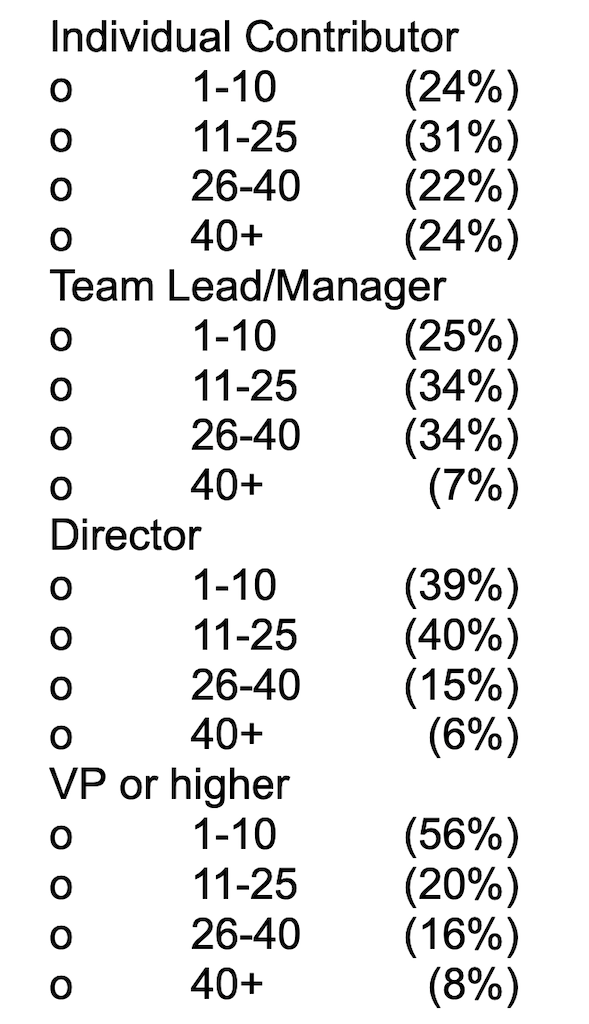What’s the employment situation in the US? It depends on what kind of work you’re looking for. Overall unemployment is pretty low, at 3.9% in February, the latest month the federal government has data for. However, that’s the highest it’s been since December 2021, as the world was still shaking off Covid. And it’s up from a 10-year low of 3.4%, last seen in April 2023.
An Uneven Employment Landscape
But the fortunes vary by industry. The biggest dips, according to data from jobs marketplace Indeed, are in the “knowledge sectors” (a term the other sectors may not appreciate). Jobs for software developers are down 28% on its platform. For mathematicians (including data scientists), they’re down 20%; and for marketers, it’s 19%.

But jobs that must be in person, such as construction and childcare, are “actually booming,” says the company—40% higher than their pre COVID levels.” This may jibe with less-granular government data, which, for instance, clocked over 90,000 new jobs in “health care and social assistance,” in February, and nearly as many in January. The broad “professional and business services” category dropped from 40,000 new jobs in January to 9,000 the next month.
Struggling Job Recruiters
Another profession that’s taken a hit: job recruiters. In a Harris Poll survey of 300 hiring managers, commissioned by Indeed, 65% reported cuts to their recruiting teams. Those who haven’t lost staff are doing a bit better at their jobs, with a 69% average response rate from candidates, vs. 61% for businesses overall.
All this data tees things up nicely for Indeed’s formal launch of a new AI-powered recruiting tool, called Smart Sourcing, that aims to find better job candidate matches, faster. (Announced in September, it was live online at least a day before today’s press release.) But as such a big job marketplace—reporting more than 350 million unique monthly visitors for a stretch of 2023—Indeed’s data and insights are genuinely interesting, beyond their marketing value.

Frustrated Job Applicants
Indeed and Harris also polled 1,107 employed adults in the same February 15-20 timeframe. The results may ring true to anyone who’s been looking for a job, especially in this tougher environment for the keyboard-tapping professions. For instance, 54% of potential jobseekers said it takes too long to hear back about next steps in the evaluation process.
That may line up with how overloaded recruiters say they are—spending an average of 13 hours on each role they need to fill. “Imagine a recruiter having 10 roles [to fill]—130 hours. That’s pretty much three weeks in a month,” said Raj Mukherjee, EVP for Indeed’s Employer division, in a press briefing yesterday.
The long hours are mainly driven by those “knowledge” sectors—with hiring for a manager role taking 15 hours and a technical role taking 14. (Most roles require about 10 hours, per the survey.)
Poorly Aimed Candidate Outreach
But that still isn’t enough time, or it’s not being spent well, according to potential employees polled. Forty percent said they have been contacted about jobs that are not a good fit—in terms of pay, level, and even location or industry. And 70% of the workers who have been contacted say the recruiters should have done more homework before reaching out.

Most recruiters agree, with 63% saying they have contacted the wrong candidates because they didn’t do enough research.
It seems to be a spray-and-pray approach, especially for lower-level jobs. According to the survey, for a VP or higher-level position, over half of the searches reach out to 10 or fewer candidates. For the lowest-level jobs (called “individual contributor”), nearly half of the outreach is to 26 people or more—with about a quarter contacting more than 40 candidates. This seems to gibe with Indeed’s and the Federal government data that lower-level jobs are harder to fill.
This includes reaching out to a lot of what Indeed calls “passive candidates”—people who are not really looking for a job. Predictably, most of these people aren’t interested: Just 36% reply, according to the hiring manager survey. Although higher-end workers are a bit more receptive. Manager, VP, and higher-level recruits reply at 41%.

Promised AI Help
Indeed aims to cut time and improve accuracy with Smart Sourcing. Some aspects seem no-brainers. For instance, the company promises that the service will surface candidates who match the companies’ job requirements—and who have been active on Indeed in the past month (a sign that they are in the market). But the software also exercises a bit of discretion. Indeed gives the example of not ruling out someone who has four years of experience, just because the job requirement states five years.
The tool will explain its recommendation in AI-generated candidate summaries. Smart Sourcing can also generate tailored outreach letters to candidates, promising big time savings.

Given the hit-and-miss nature of text-generating technology over the past two years, it will be interesting to see how well Indeed hits the mark. Or if it incorporates biases—something I (and another reporter) asked about during the briefing.
“We are collecting, all the time, a lot of structured information about jobs, just as we’re trying to collect a lot of structured information about job seekers and what they’re solving for and what they can do,” said Maggie Hulce, Mukherjee’s counterpart on the Job Seeker side of the company.
“Your [the employer’s] job is looking for the following skills in the following types of environments. And this job seeker is a good match for that because of the overlap that we see in this job seeker’s profile and what’s true about the job,” she added. “And that’s fairly easy to give a synopsis on. AI giving sort of additional color commentary on things that might stand out can be helpful. But there’s also the true, clean sort of structured [process]. Like, ‘You asked for these five things, and all of these candidates have all those five things and are interested in this type of role and your type of company.’”















